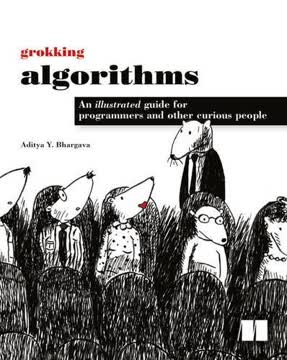Key Takeaways
1. Algorithms: The bedrock of efficient problem-solving.
An algorithm is a set of instructions for accomplishing a task.
Algorithms defined. At its core, an algorithm is simply a well-defined procedure or set of rules designed to solve a specific problem. They are the fundamental building blocks of computer programs, dictating how data is processed and manipulated to achieve a desired outcome. The choice of algorithm significantly impacts the efficiency and performance of a program, making algorithm selection a critical aspect of software development.
Algorithm examples. Algorithms are not limited to the realm of computer science; they are prevalent in everyday life. For example:
- A recipe for baking a cake is an algorithm.
- Driving directions from one location to another is an algorithm.
- The steps for assembling furniture is an algorithm.
Importance of algorithms. Understanding algorithms is crucial for programmers because it enables them to write efficient and effective code. By selecting the right algorithm for a given task, developers can optimize performance, reduce resource consumption, and improve the overall user experience.
2. Binary Search: A logarithmic time marvel.
With binary search, you guess the middle number and eliminate half the remaining numbers every time.
Binary search defined. Binary search is an efficient algorithm for finding a specific value within a sorted list. It works by repeatedly dividing the search interval in half. If the middle element matches the target value, the search is successful. Otherwise, the search continues in either the left or right half of the interval, depending on whether the target value is less than or greater than the middle element.
Logarithmic time complexity. The key advantage of binary search is its logarithmic time complexity, denoted as O(log n). This means that the number of steps required to find the target value increases logarithmically with the size of the list. For example:
- A list of 1,024 elements requires at most 10 steps.
- A list of 1,048,576 elements requires at most 20 steps.
Practical applications. Binary search is widely used in various applications where efficient searching is essential, including:
- Searching for a word in a dictionary.
- Finding a contact in a phone book.
- Looking up data in a sorted database index.
3. Arrays vs. Linked Lists: Choosing the right structure.
With an array, all your elements are stored right next to each other.
Arrays and linked lists defined. Arrays and linked lists are two fundamental data structures used to store collections of elements. Arrays store elements in contiguous memory locations, while linked lists store elements in non-contiguous locations, with each element pointing to the next element in the sequence. The choice between arrays and linked lists depends on the specific requirements of the application.
Arrays advantages. Arrays offer fast random access to elements, meaning that any element can be accessed directly using its index in O(1) time. This makes arrays suitable for applications where frequent element lookups are required.
Linked lists advantages. Linked lists excel at insertions and deletions, particularly in the middle of the list. Inserting or deleting an element in a linked list only requires updating the pointers of the adjacent elements, which can be done in O(1) time. This makes linked lists suitable for applications where frequent insertions and deletions are required.
4. Recursion: Elegance in self-reference.
Recursion is where a function calls itself.
Recursion defined. Recursion is a powerful programming technique where a function calls itself within its own definition. This allows complex problems to be broken down into smaller, self-similar subproblems, which can be solved recursively until a base case is reached.
Base case and recursive case. Every recursive function must have two essential components:
- A base case, which specifies when the recursion should stop.
- A recursive case, which defines how the function should call itself with a smaller subproblem.
Call stack. Recursive functions rely on the call stack to keep track of the state of each function call. Each time a function calls itself, a new frame is added to the call stack, storing the function's variables and execution context. When the base case is reached, the function returns, and the frames are popped off the call stack in reverse order.
5. Quicksort: Divide, conquer, and sort efficiently.
Quicksort is a sorting algorithm.
Quicksort defined. Quicksort is a popular and efficient sorting algorithm that employs the divide-and-conquer paradigm. It works by selecting a "pivot" element from the array and partitioning the other elements into two sub-arrays, according to whether they are less than or greater than the pivot. The sub-arrays are then recursively sorted, and the sorted sub-arrays are combined with the pivot to produce the final sorted array.
Divide and conquer. Quicksort exemplifies the divide-and-conquer strategy, which involves breaking down a problem into smaller, self-similar subproblems, solving the subproblems recursively, and then combining the solutions to solve the original problem.
Average case performance. Quicksort has an average time complexity of O(n log n), making it one of the fastest sorting algorithms in practice. However, its worst-case time complexity is O(n^2), which can occur when the pivot is consistently chosen poorly. To mitigate this risk, it is common to choose the pivot randomly.
6. Hash Tables: The power of key-value lookups.
A hash table maps keys to values.
Hash tables defined. Hash tables are a powerful data structure that allows for efficient storage and retrieval of key-value pairs. They work by using a hash function to map each key to an index in an array, where the corresponding value is stored. This allows for constant-time (O(1)) average-case lookup, insertion, and deletion operations.
Hash functions. The performance of a hash table depends heavily on the quality of the hash function. A good hash function should distribute keys evenly across the array to minimize collisions, which occur when two or more keys map to the same index.
Use cases. Hash tables are widely used in various applications where efficient key-value lookups are essential, including:
- Implementing dictionaries and symbol tables.
- Caching data for faster retrieval.
- Indexing databases for efficient searching.
7. Breadth-First Search: Navigating networks with ease.
Breadth-first search tells you if there’s a path from A to B.
Breadth-first search defined. Breadth-first search (BFS) is a graph traversal algorithm that explores a graph level by level, starting from a given source node. It systematically visits all the neighbors of the source node, then all the neighbors of those neighbors, and so on, until the target node is found or the entire graph has been explored.
Shortest path. BFS is guaranteed to find the shortest path between two nodes in an unweighted graph, where the shortest path is defined as the path with the fewest edges.
Queues. BFS uses a queue to keep track of the nodes to be visited. The queue ensures that nodes are visited in the order they were discovered, which is essential for finding the shortest path.
8. Dijkstra's Algorithm: Finding the shortest weighted path.
Dijkstra’s algorithm is used to calculate the shortest path for a weighted graph.
Dijkstra's algorithm defined. Dijkstra's algorithm is a graph search algorithm that solves the single-source shortest path problem for a graph with non-negative edge weights, producing a shortest path tree. This means, given a source node, the algorithm finds the shortest path between that node and every other.
Weighted graphs. Unlike breadth-first search, Dijkstra's algorithm can handle weighted graphs, where each edge has a numerical value associated with it, representing its cost or distance.
Directed acyclic graphs. Dijkstra's algorithm only works with directed acyclic graphs (DAGs), which are graphs that have no cycles and where all edges have a direction.
9. Greedy Algorithms: Quick, approximate solutions.
Greedy algorithms optimize locally, hoping to end up with a global optimum.
Greedy algorithms defined. Greedy algorithms are a simple and intuitive problem-solving approach that involves making the locally optimal choice at each step, with the hope of finding a globally optimal solution. They are often used when finding the exact solution is computationally expensive or impossible.
Approximation algorithms. Greedy algorithms are often used as approximation algorithms, which provide a solution that is close to the optimal solution but may not be exactly optimal.
Set covering problem. A classic example of a problem where greedy algorithms are useful is the set covering problem, which involves finding the smallest set of subsets that cover all the elements in a given set.
10. Dynamic Programming: Optimizing through subproblems.
Dynamic programming is useful when you’re trying to optimize something given a constraint.
Dynamic programming defined. Dynamic programming is a powerful problem-solving technique that involves breaking down a complex problem into smaller, overlapping subproblems, solving each subproblem only once, and storing the solutions in a table or memo to avoid recomputation. This approach can significantly improve the efficiency of algorithms for problems that exhibit optimal substructure and overlapping subproblems.
Knapsack problem. A classic example of a problem that can be solved using dynamic programming is the knapsack problem, which involves selecting a subset of items with maximum value that can fit into a knapsack with a limited capacity.
Grid. Every dynamic-programming solution involves a grid. The values in the cells are usually what you’re trying to optimize. Each cell is a subproblem, so think about how you can divide your problem into subproblems.
11. K-Nearest Neighbors: Learning from your neighbors.
KNN is used for classification and regression and involves looking at the k-nearest neighbors.
K-nearest neighbors defined. K-nearest neighbors (KNN) is a simple yet effective machine learning algorithm that can be used for both classification and regression tasks. It works by finding the k nearest data points to a given query point and then predicting the class or value of the query point based on the majority class or average value of its neighbors.
Classification and regression. KNN can be used for both classification (categorizing data points into different classes) and regression (predicting a continuous value).
Feature extraction. Feature extraction is the process of converting raw data into a set of numerical features that can be used by the KNN algorithm. The choice of features is crucial for the performance of the algorithm.
Last updated:
FAQ
1. What’s "Grokking Algorithms" by Aditya Bhargava about?
- Beginner-friendly algorithms guide: "Grokking Algorithms" is an illustrated introduction to algorithms, designed for programmers and curious readers who want to understand how algorithms work in practice.
- Visual and example-driven: The book uses visuals, analogies, and real-world examples to explain complex concepts in a simple, engaging way.
- Covers practical algorithms: It focuses on practical algorithms and data structures that are widely used, such as binary search, sorting, hash tables, and graph algorithms.
- Step-by-step learning: Each chapter builds on the previous one, gradually introducing more advanced topics and reinforcing learning with exercises and code samples.
2. Why should I read "Grokking Algorithms" by Aditya Bhargava?
- Accessible for beginners: The book is written for anyone with basic coding knowledge, making it ideal for self-taught programmers, bootcamp students, and those new to computer science.
- Visual learning approach: If you’re a visual learner, the book’s illustrations and analogies make abstract concepts much easier to grasp.
- Practical focus: The algorithms covered are chosen for their real-world usefulness, helping you solve common programming problems efficiently.
- Foundation for further study: It provides a strong foundation for more advanced topics in algorithms, AI, databases, and machine learning.
3. What are the key takeaways from "Grokking Algorithms"?
- Understanding algorithm efficiency: You’ll learn how to analyze and compare algorithms using Big O notation, focusing on how their performance scales.
- Core data structures: The book explains arrays, linked lists, hash tables, and graphs, highlighting their strengths and weaknesses.
- Problem-solving techniques: It introduces strategies like divide-and-conquer, recursion, greedy algorithms, and dynamic programming for tackling complex problems.
- Real-world applications: Each algorithm is tied to practical use cases, such as search engines, recommendation systems, and network routing.
4. How does Aditya Bhargava explain Big O notation and algorithm performance in "Grokking Algorithms"?
- Intuitive analogies: Bhargava uses relatable examples, like searching for a name in a phone book, to illustrate the difference between linear, logarithmic, and other time complexities.
- Visual comparisons: The book includes charts and diagrams to help visualize how different algorithms scale as input size increases.
- Focus on worst-case scenarios: Big O notation is explained as a way to describe the worst-case performance of an algorithm, helping you choose the right one for your needs.
- Practical implications: Readers learn why understanding algorithm efficiency matters in real-world programming, such as optimizing for speed or memory.
5. What is the approach to teaching recursion in "Grokking Algorithms"?
- Step-by-step breakdown: Recursion is introduced with simple, relatable problems, like searching for a key in nested boxes, to demystify the concept.
- Base and recursive cases: The book emphasizes the importance of defining clear base and recursive cases to avoid infinite loops.
- Call stack visualization: Bhargava explains how the call stack works during recursion, using diagrams and analogies like a stack of sticky notes.
- Practical examples: Readers practice recursion with exercises like calculating factorials and summing lists, building confidence through repetition.
6. How does "Grokking Algorithms" explain and compare arrays, linked lists, and hash tables?
- Memory and structure: The book uses analogies (like drawers and movie seats) to explain how arrays and linked lists store data in memory.
- Strengths and weaknesses: Arrays are shown to be fast for random access but slow for insertions/deletions, while linked lists excel at inserts/deletes but are slow for random access.
- Hash tables as hybrids: Hash tables are introduced as a powerful structure combining fast lookups with flexible storage, using hash functions to map keys to values.
- Real-world use cases: Each data structure is tied to practical scenarios, such as implementing queues, phone books, and caches.
7. What are the main sorting and searching algorithms covered in "Grokking Algorithms," and how are they explained?
- Binary search: Introduced early as a fast way to search sorted lists, with clear explanations of its O(log n) efficiency.
- Selection sort: Used to teach basic sorting concepts and Big O analysis, showing why it’s less efficient (O(n²)) than more advanced algorithms.
- Quicksort: Presented as a divide-and-conquer algorithm, with step-by-step partitioning and recursion, and a discussion of average vs. worst-case performance.
- Comparison and context: The book compares these algorithms, helping readers understand when to use each and why efficiency matters.
8. How does "Grokking Algorithms" introduce graph algorithms like breadth-first search and Dijkstra’s algorithm?
- Graphs as networks: The book models real-world problems (like finding the shortest route in a city) as graphs, making the concept tangible.
- Breadth-first search (BFS): Explained as a way to find the shortest path in unweighted graphs, using queues and step-by-step exploration.
- Dijkstra’s algorithm: Introduced for finding the shortest path in weighted graphs, with clear tables and diagrams to track costs and paths.
- Practical applications: Examples include social networks, routing, and trading scenarios, showing the relevance of graph algorithms.
9. What is dynamic programming, and how is it taught in "Grokking Algorithms"?
- Breaking down hard problems: Dynamic programming is introduced as a way to solve complex problems by breaking them into overlapping subproblems.
- Grid-based solutions: The book uses grids to visualize subproblems, such as in the knapsack problem and longest common substring.
- Step-by-step filling: Readers learn to fill in grids row by row or column by column, building up to the optimal solution.
- Common pitfalls and tips: Bhargava addresses common questions, like handling dependencies and fractional items, and emphasizes when dynamic programming is appropriate.
10. How does "Grokking Algorithms" cover greedy algorithms and NP-complete problems?
- Greedy strategy explained: The book defines greedy algorithms as those that make the locally optimal choice at each step, hoping for a global optimum.
- Classic examples: Problems like classroom scheduling, the knapsack problem, and set covering are used to illustrate where greedy algorithms work and where they fall short.
- Approximation algorithms: For NP-complete problems, the book advocates for approximation via greedy methods when exact solutions are impractical.
- Recognizing NP-completeness: Readers are given tips to identify NP-complete problems and avoid wasting time seeking perfect solutions.
11. How does "Grokking Algorithms" introduce machine learning concepts like k-nearest neighbors (KNN)?
- KNN for classification: The book explains KNN as a simple algorithm for classifying items based on the majority class of their nearest neighbors.
- Feature extraction: Readers learn how to represent data (like fruit or users) as points in multi-dimensional space using relevant features.
- Regression and recommendations: KNN is also shown as a tool for regression (predicting values) and building recommendation systems, such as for movies.
- Limitations and improvements: The book discusses challenges like feature selection, normalization, and the use of cosine similarity for better results.
12. What are the best quotes from "Grokking Algorithms" by Aditya Bhargava, and what do they mean?
- "Algorithm speed isn’t measured in seconds, but in growth of the number of operations." – Emphasizes the importance of understanding scalability over raw speed.
- "Recursion may achieve a performance gain for your programmer." – Highlights that recursion can make code clearer and easier to reason about, even if not always faster.
- "Greedy algorithms optimize locally, hoping to end up with a global optimum." – Sums up the core idea behind greedy strategies and their limitations.
- "Dynamic programming is useful when you’re trying to optimize something given a constraint." – Captures when and why to use dynamic programming in problem-solving.
- "I believe you learn best when you really enjoy learning—so have fun, and run the code samples!" – Encourages hands-on practice and enjoyment as keys to mastering algorithms.
Review Summary
Grokking Algorithms An Illustrated Guide For Programmers and Other Curious People receives high praise for its approachable, visual approach to teaching algorithms. Readers appreciate its simplicity, engaging illustrations, and clear explanations, making it an excellent introduction for beginners and a refresher for experienced programmers. The book covers fundamental algorithms and data structures, with many finding it enjoyable and easy to understand. Some criticisms include uneven difficulty levels, occasional errors, and a lack of depth in certain topics. Overall, it's widely recommended as a friendly, accessible guide to algorithms.
Similar Books
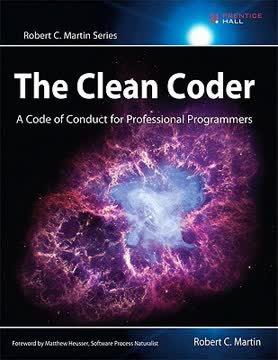
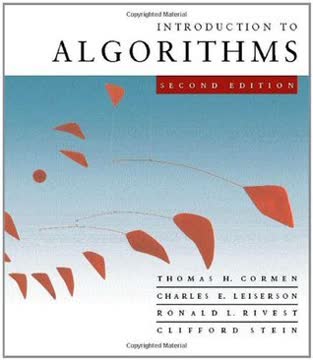

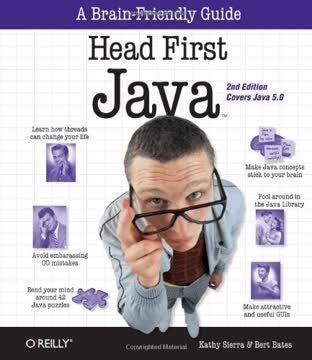
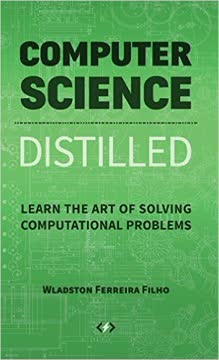
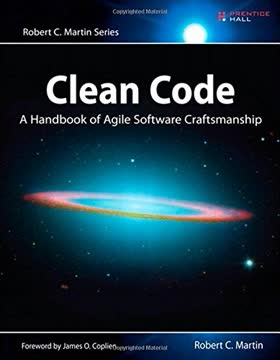
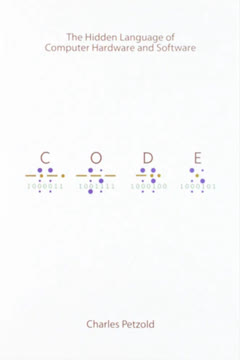
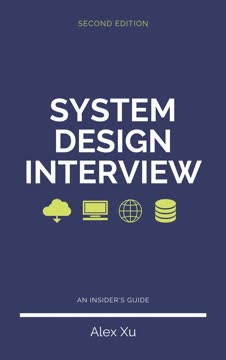
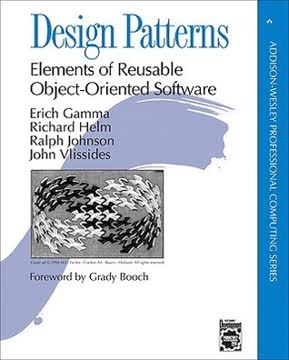
Download PDF
Download EPUB
.epub digital book format is ideal for reading ebooks on phones, tablets, and e-readers.
